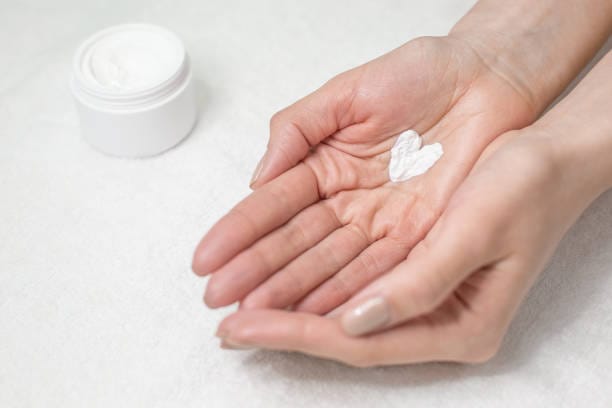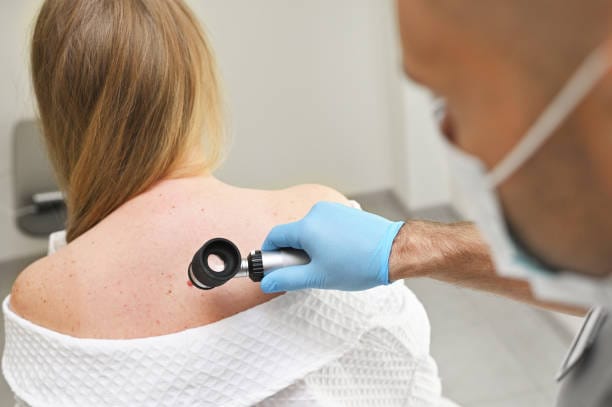
Skin tag removal for sensitive skin targets harmless growths that often appear on the neck, underarms, eyelids, and groin, offering a gentle and effective solution. While they are common and noncancerous, many individuals still choose to remove them because they can become irritated or for cosmetic reasons. However, if you have sensitive skin, then the procedure of skin tag removal becomes more complicated and riskier.
When skin tag removal is performed on sensitive skin, extra special care is required to prevent redness, swelling, scarring, and allergic reactions. Sensitive skin is more prone to irritation from chemicals, tools, or treatments that others may not. Therefore, choosing the proper method for both safety and results is crucial.
Several home remedies claim to speed up skin tag removal, but these products usually contain harsh chemicals or tools that can damage sensitive skin. Skin tags can be burnt, frozen, or cut, but doing so without professional guidance can cause irritation, Diseases, and dark spots, especially on sensitive skin.
Fortunately, there are safe ways to do the service if you have sensitive skin. Risks are minimised, and professional treatments done by experienced specialists protect the skin barrier. A professional approach via laser treatments, cryotherapy, electroProcedure, or any other procedure will ensure proper care, hygiene, and minimal discomfort.
This detailed guide will explore the safest and most effective ways to remove skin tags on sensitive skin. It will also cover post-treatment care, what to avoid, and why professional treatments are recommended. Can you remove skin tags at home, or do you need the help of a skin expert? This article will guide you precisely in this regard.
Why Sensitive Skin Needs Special Care During Skin Tag Removal
Extra care is not just a suggestion for skin tag removal on sensitive skin—it is necessary. Even a simple skin tag removal can be painful or damaging if left untreated.

Increased Risk of Irritation and Redness
The skin that is considered sensitive is easily irritated by chemical, friction, or environmental changes. Most over-the-counter skin tag removal products contain acids or harsh chemicals that can cause redness, swelling, or burning sensation. Unlike removing the tag safely, these products leave sensitive skin inflamed or scarred.
Higher Chances of Allergic Reactions
Salicylic acid, tea tree oil, or adhesives found in skin tag patches can cause allergic reactions in sensitive skin. Symptoms may include itching, rashes, or blistering. That’s why it is essential to know what is in the product before you apply it to delicate skin.
Slow Healing and Scarring
The skin won’t heal as fast as other people’s when they have sensitive skin. Cutting or freezing at home to remove the skin tag can break the skin tag and get rid of it, but it may also cause long-term scarring or post-inflammatory hyperpigmentation. On sensitive skin, these marks tend to be more visible, and the problem will get worse.
Why Professional Care is Safer Skin Tag Removal for Sensitive Skin
Professional skin specialists are best suited to handle sensitive skin. They bring their expertise, sterile tools, advanced technology, pain-minimizing techniques, and least skin-damaging techniques. Their professional methods, such as laser, cryotherapy, and electroProcedure, protect the skin barrier while effectively removing the tag, ensuring your skin is in safe hands.
If you have sensitive skin, going to a professional clinic is best. This minimises the risk of complications and ensures that your skin will be healthy, smooth, and free of irritation afterwards.
Risks Involves Skin Tag Removal for Sensitive Skin at Home
While home remedies and DIY kits may seem easy, they can be dangerous, especially for sensitive skin. Harsh products, chemicals, and physical damage can particularly irritate sensitive skin, leading to potential complications such as irritation, Disease, or permanent scarring. It’s crucial to be cautious and aware of these risks.
1. Skin Irritation and Inflammation
Most over-the-counter skin tag removal creams contain strong acids or chemicals to burn off the tag. Such harsh ingredients are not suitable for sensitive skin, and these often cause:
- Redness
- Itching
- Burning sensations
- Swelling or rashes
Home treatments can make the problem worse, delaying the healing time.
2. Risk of Diseases During Skin Tag Removal For Sensitive Skin
Skin tag removal pens, scissors, or threads are sometimes used at home and not sterilized. This can introduce bacteria into the bloodstream, resulting in Diseases.
Common signs of Disease include:
- Pus discharge
- Pain and redness
- Warmth around the area
- Fever in severe cases
A minor Disease can spread quickly and leave permanent marks or make the skin more sensitive for sensitive skin.
3. Bleeding and Scarring of Skin Tag Removal For Sensitive Skin
Cutting or tying off skin tags yourself could lead to excessive bleeding, especially if the skin tag has a blood supply. Thinner and more prone to damage, sensitive skin makes it harder to stop bleeding.
In addition, the more aggressive removal methods increase the risk of:
- Keloids (raised scars)
- Dark spots
- Permanent skin discoloration
Such side effects can be emotionally distressing if skin tags are in any areas that can be seen, such as the face or neck.
4. Misdiagnosis and Delayed Medical Help
It’s important to remember that not every skin growth is harmless. Skin tags can sometimes be mistaken for moles, warts, or other potential signs of early skin cancer. Removing these at home can lead to possible complications and delay proper diagnosis and treatment. This is why a professional diagnosis is crucial, especially for sensitive skin.
Sensitive skin adds to this risk, so any unusual reaction may go unnoticed or be attributed to sensitivity instead of a more serious condition.
Why Professional Help is Safer
However, given these risks, skin tag removal for sensitive skin should never be done by a person without professional help. They ensure the skin growth removal is done safely and correctly diagnose the skin growth.

How to Prepare for Professional Skin Tag Removal if You Have Sensitive Skin
Preparing your sensitive skin before any kind of skin tag removal is essential for sensitive skin treatment. This helps prevent irritation, minimise risks, and accelerate healing. A little preparation goes a long way toward a smooth and successful procedure.
These are essential steps to do before your appointment:
1. Consult a Professional Skin Specialist
For sensitive skin, book a consultation with a qualified dermatologist or clinic specialising in skin tag removal. A professional assessment will:
• Make sure the growth is a skin tag, not another skin condition.
• It will help you understand the best treatment option for your skin sensitivity.
• Refer to your medical history of the skin, allergies, or any medication you take.
Why it gets along: Sensitive skin responds poorly to harsh therapies, so a customised plan is fundamental for security.
2. Do Not Apply Skincare Products in the Area
Stop applying any creams, serums, or oils, especially any cream, serum, or oil containing:
• Retinol
• Glycolic acid
• Salicylic acid
• Vitamin C
These active ingredients may make the skin more sensitive to irritation or burns during the procedure.
3. Sun Protect Your Skin from Exposure.
If the skin tag is visible in a location such as a face, neck, or shoulder:
• Avoid direct sun exposure
• Safe, gentle sunscreen for the sensitive skin.
Being sunburned or inflamed will delay your procedure or make removal more uncomfortable.
4. Keep the Area Clean and Dry
On the day of your appointment:
• Use sensitivity to cleanse the area with mild, fragrance-free soap.
• Lotions, makeup, and deodorants should not be applied to the area to avoid chemical reactions during treatment.
5. Drink enough and don’t take blood thinning medications.
This helps faster healing post-procedure, and drinking plenty of water maintains good skin hydration.
For removal, avoid blood thinners such as aspirin (unless prescribed) to reduce the risk of bleeding.
Final Tip:
Ask your dermatologist for instructions on aftercare beforehand. After skin tag removal, your sensitive skin will know how to prevent Diseases and scarring.
Proper preparation will make skin tag removal safer, more effective, and less stressful for sensitive skin treatment.
Aftercare Tips for Sensitive Skin Post-Removal
Skin tag treatment for sensitive skin is just as necessary as caring for your skin after you’ve removed a skin tag. Healing sensitive skin well and avoiding irritation, scarring, or Disease requires extra attention. After recovery, the proper aftercare routine allows your skin to heal and protects the natural barrier.
After removal, the sensitive skin will need these expert aftercare tips.
1. Make sure the hygiene is well-maintained
Clean the treated area twice a day gently with the following:
• Lukewarm water
• Mild, fragrance-free cleanser
• A soft cotton pad or clean fingertips
Dry the area with a clean towel. Rubbing will also irritate sensitive skin.
2. Apply a Soothing Healing Ointment
A soothing ointment such as:
• Petroleum jelly (Vaseline)
• Aloe vera gel (pure and fragrance-free)
• Antibiotic ointment (if prescribed)
These advantages include building a protective wall, preventing Disease, and helping in faster healing.
3. Don’t Scratch or Pick the Area
If the area itches or forms a small scab, even.
• Do not scratch, rub, or pick at the skin.
• Let scabs fall off naturally to avoid scarring.
Post-inflammatory pigmentation is a sensitivity of sensitive skin.
4. Preventing the Skin from Exposure to the Sun.
The skin in any condition is highly vulnerable to sun damage, but freshly treated skin is especially so. Protect it by:
• Staying indoors or in the shade
• wearing protective clothing if the area is exposed
• Wearing a gentle, hypoallergenic sunscreen (SPF 30 or higher) over the area after the area is healed
This works as your skin is sensitive, and you can prevent dark spots or pigmentation.
5. Avoid Using Harsh Products
Do not apply for at least a week following treatment:
• Retinol or retinoids
• Acids (salicylic, glycolic, lactic)
• Vitamin C serums
• Alcohol-based toners or products
Keep the moisturisers mild and without any fragrance at all.
6. Get a Skin Specialist Follow-Up.
Schedule a follow-up appointment to:
• It should make sure the area is healing correctly.
• If it is red, swollen, or irritated, discuss it.
• You will get professional advice about when you can resume your skincare routine.
Skin Tag Removal For Sensitive Skin Final Tip
Following skin tag removal, these aftercare steps protect sensitive skin from damage, reduce healing time, and avoid complications like scarring or pigmentation. Always care gently for sensitive skin to maintain a healthy and smooth appearance.
Why Choose Professional Skin Tag Removal for Sensitive Skin at Revitalise London?
Selecting the right clinic for skin tag removal for sensitive skin makes a lot of difference. Harsh treatments can provoke sensitive skin, so care taken by professionals is safe, precise, and comfortable throughout the procedure. With Revitalise London, we know the particular requirements for sensitive skin and can offer you the exact solutions you need with perfect precision.
1. Expertise in Treating Skin Tag Removal For Sensitive Skin
With years of experience working with sensitive skin conditions, our certified skin specialists can handle them. Before recommending any means of Skin Tag Removal For Sensitive Skin, we carefully assess your skin type, skin tag size, and location, and we consider if there is some underlying skin sensitivity.
The trained removal techniques use the latest, gentle techniques.
• Minimize skin trauma
• Prevent scarring
• Helps to achieve faster healing for the sensitive skin.
2. Safe & Advanced Techniques Skin Tag Removal For Sensitive Skin
Methods of advanced skin tag removal for sensitive skin we use at Revitalise London include:
• Cryotherapy (freezing)
• Radiofrequency removal
• Laser skin tag removal
The skin tag is chosen depending on its location and the degree of sensitivity of your skin. Each method is determined to be the most effective with the minimum discomfort.
Noninvasive and pain-free treatment is our priority, and your sensitive skin is protected throughout the process.
3. Customized Aftercare Guidance Of Skin Tag Removal for Sensitive Skin
Proper aftercare is crucial after the skin tag removal for sensitive skin. They offer detailed aftercare instructions for delicate skin. We guide you on:
• What is needed to cleanse and moisturise the area?
• Which products to avoid
• What is it to protect your skin while healing
We advise avoiding irritation, pigmentation, and scarring when you recover.
4. Comfortable, Hygienic, and Professional Environment
All of our priorities are safety and comfort. At Revitalise London, you’ll find:
• A clean, hygienic environment
• Friendly and experienced staff
• What every step of the way is personalised care
Ensuring that every client with sensitive skin has confidence and feels cared for while taking their skin tag away.
Treatments removal of skin tags, though, can leave sensitive areas of the skin vulnerable for a long time due to immaturity unless the removal is done at a clinic like Revitalise London and experiences expert care, advanced techniques, and reliable skin tag removal for sensitive skin results. Consultation with our team is always available and booked today to help you with smooth, healthy skin safely.
Common Myths About Skin Tag Removal for Sensitive Skin
Many people believe myths about tag removal for sensitive skin, and some of them can be harmful to anyone. Choosing the safest method is essential to distinguishing fact from fiction.
Myth 1: Sensitive Skin is safe with home remedies
As natural, many people believe that apple cider vinegar, tea tree oil, or garlic is gentle because they are “natural.” However, these substances can be too harsh, especially for the sensitive skin. These can lead to skin irritation, redness, and even burns, leaving scars or worsening the skin condition.
Myth: Skin tags will disappear on their own in
Some skin tags will shrink; most will not disappear on their own. This myth can delay proper care and, depending on the person, make the tags bigger and more challenging to remove, especially for people with sensitive skin.
Myth 3: All removal creams are safe for sensitive skin.
Many over-the-counter creams are supposed to remove skin tags safely. However, not all are created for sensitive skin. Incorrect product use can cause allergic reactions, itching, and severe skin damage.
When you have sensitive skin, always choose professional skin tag removal for sensitive skin to prevent any further risks to your skin.
Skin Tag Removal for Sensitive Skin Conclusion
Skin tag removal is essential for delicate skin, and you should choose the best method to protect your skin from harm and give you practical, permanent results. While home remedies and over-the-counter products may seem convenient, they can also be risky. Some cause irritation, scarring, and skin damage, and they tend to damage the skin even more if you have sensitive skin.
Professional treatments are the safest and most effective option. Skin experts employ cryotherapy, laser removal, or Treatments excision techniques to treat skin tags with the lowest discomfort and maximum safety for sensitive skin types. These treatments aim to treat skin tags without damaging the surrounding skin.
Proper aftercare is also important and should be followed, as well as consulting a qualified professional before attempting any removal method. And sensitive skin takes extra care; choosing the wrong method can take care of some long-term skin issues.
However, if you have sensitive skin and are struggling with skin tags, do not risk doing it yourself, as you could cause a scab. With expert advice, you will get safe and effective removal suited to your skin type.
Why Choose Revitalise London?
Revitalise London is a spot that offers skin tag removal for sensitive skin. You get smooth, tag-free results with the protection of your skin’s health, which our experienced team has personalised treatments to provide. Always book your consultation today and get safe and expert care to trust.
